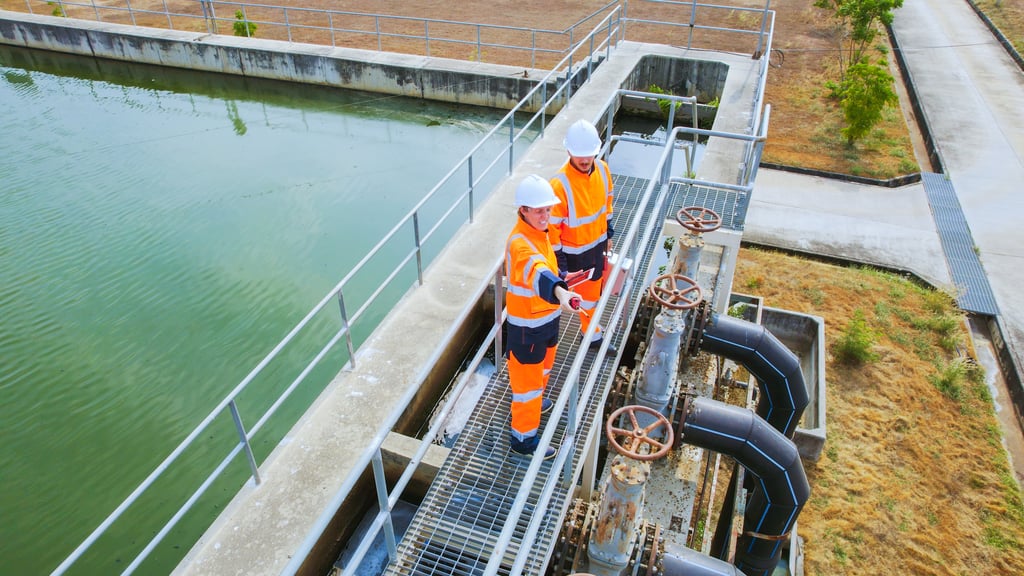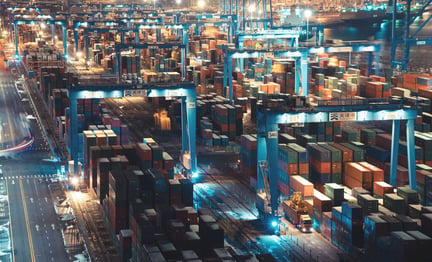Climate risk is increasingly material to both corporate strategy and government policy. As the rate of climate change accelerates, data and Artificial Intelligence (AI) are emerging as indispensable tools, and an opportunity to transform how organizations assess and manage their climate impact.
The convergence of data and AI is reshaping how we approach climate resilience and sustainability, setting the stage for smarter, more proactive decision-making. Through analyzing the vast amounts of environmental data that we now have access to, these increasingly sophisticated tools are not only measuring current risks with greater precision but also anticipating future challenges with unprecedented accuracy. The focus however needs to remain on making sense of this vast data, sharing best practices and prioritising quality data to catalyse real change in the fight against climate risks.
Data's expanding role in climate management
The availability of large-scale environmental data has significantly enhanced our understanding of climate change. Today, satellites, sensors and remote monitoring systems collect real-time data on temperature fluctuations, rising sea levels, ice melt and forest degradation, to name just a few indicators. Such comprehensive data is therefore allowing us to observe immediate environmental changes whilst tracking long-term trends, offering a clearer picture of both global and regional climate dynamics.
One of the most transformative developments in recent years has been the integration of AI with such data. AI tools, such as machine learning models, can process and analyze immense datasets far more efficiently than traditional methods, generating insights that inform climate models and risk assessments. These AI-powered tools can detect subtle patterns in environmental changes, such as those occurring in ecosystems like oceans or forests, offering predictions that were previously out of reach. As just one example, Arctic ice predictions have been significantly improved through the use of AI models like IceNet. Whilst many of these tools remain at the cutting edge, still undergoing development and testing, indication show they outperform traditional methods in accuracy and speed.
Shifting the way businesses and government assess climate risk
The abundance of data has also transformed how businesses and governments approach climate risk. Corporations are now able to assess the potential impacts of climate change on their operations and supply chains with a level of precision that was previously unimaginable. This data-driven approach has shifted the focus from general commitments to highly specific targets. For example, the Science Based Targets initiative (SBTi) relies on data to help companies align their carbon reduction efforts with global net zero targets, making corporate sustainability efforts much more accountable and measurable.
Similarly, governments can use large datasets to forecast future risks more accurately and develop policies that are regionally targeted and more effective. For example, water stress data or deforestation maps, such as those produced by Global Forest Watch, help governments pinpoint vulnerabilities, prioritise mitigation efforts and guide regulatory decisions. Even the existence of such maps demonstrates the strides that have been made in making data accessible and interactive. Access to data is therefore no longer the issue, now it’s the ‘so what?’.
AI’s promise and challenges in predicting climate risks
AI is not only improving our ability to understand the current state of the environment but is also playing a crucial role in predicting future climate risks. Traditional climate models, whilst accurate, often require significant computational resources and are limited in their ability to predict complex, chaotic processes. AI models, on the other hand, can accelerate predictions and offer insights that human-led analysis might miss.
However, there are challenges to AI’s use in climate predictions. The ‘black box’ nature of many AI models can make it difficult to explain how certain predictions are made. For policymakers and corporate leaders, this lack of transparency can pose a problem, especially when critical decisions depend on the model’s output. Also, the quality of AI models is directly tied to the data they are trained on. If the data is biased, incomplete or low-quality, the models’ predictions may be misleading.
ESG considerations
Whilst AI offers remarkable potential, it also raises important Environmental, Social and Governance (ESG) considerations feeding a global dialogue frequently covered by the world press. There are concerns about bias in AI models, particularly if the data inadvertently skews assessments of climate risks to certain populations or regions. Similarly, the resource intensity of AI itself – the computational power required – could paradoxically contribute to environmental harm if not managed sustainably. We are, however, seeing efforts from leaders in AI to offset emissions from the data centres powering it.
In the race to harness these new technologies, there are signs that industry is starting to understand climate change as a collective issue. The solutions therefore require a level of collaboration that transcends sectors, governments and regions. The deployment of AI should encourage greater cooperation rather than isolated efforts, where individual organizations try to create their own bespoke solutions. Shared tools, open data and best practices are essential to addressing climate risks effectively and equitably.
The future of data-driven climate action
Looking ahead, data-driven approaches will only increase in importance as we confront the growing threats of climate change. The adoption of technologies like digital twins – virtual simulations of physical systems – will allow businesses and governments to optimise energy use, mitigate environmental risks and develop more precise regulatory frameworks. Similarly, the integration of AI with the Internet of Things (IoT) will enable real-time responses to climate-related risks, such as extreme weather events or disruptions in food supply chains.
We are also likely to see more advanced, personalised climate impact assessments, which will enable organizations to take tailored actions based on their specific exposures to climate risks. As reporting and transparency requirements grow, driven by both regulatory bodies and consumer demand, data and AI will continue to underpin accountability in sustainability efforts.
In an era where data is abundant, thanks to the IoT, sensors and digital transformation, we have unprecedented access to vast amounts of information. Whilst this transparency offers immense potential, it also presents a challenge: the sheer volume of data can overwhelm rather than enlighten. It's not enough to simply gather more information – we must discern what truly matters and how it can drive meaningful, focused action. The key lies in identifying the specific threats we need to address, such as the exact forests to protect or chemicals to eliminate, and focusing on solutions that foster collaboration – this is not the time to be competitive. Ultimately, it’s not just about amassing data but about making sense of it, sharing best practices and using it to catalyse real change in the fight against climate risks.
Find out how LRQA can help in addressing the impact of ESG challenges on your business.









